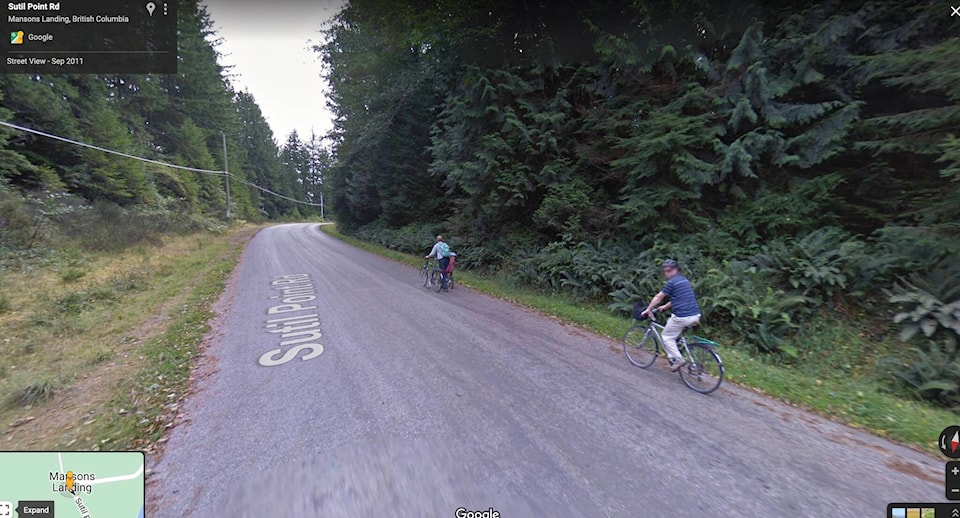The Cortes Island Active Transportation Planning project is now complete, with results released by the Strathcona Regional District (SRD) showing where people are feeling the most in danger when they are out walking or cycling on the island.
The survey, which was conducted earlier this year, showed that most concern was near the more populated areas of the island. Manson’s Landing and the surrounding area had most areas of concern for both walkers and people on bikes. Most other areas of concern were located near Whaletown and Gorge Harbour.
According to the survey, most people on the island drive alone (48 per cent), but were also more likely to cycle if better infrastructure was provided (58 per cent).
The top three barriers to walking were people needing to carry too much, distance and the speed of motor vehicle traffic. For cyclists, the top three were a lack of bicycle routes, the speed of motor vehicle traffic and unsafe-feeling bike routes.
SRD staff showcased a few key themes in their report to the board presented at last week’s board meeting. According to the report, there is a desire for people to be able to walk and ride safely on the island, but that major roadways and shoulders “are inadequate for walking and cycling.”
The report lists suggestions from the community, including separate or dedicated pathways and bike lanes, and lowering speed limits and other traffic calming measures on shared roadways.
Cortes Island director Noba Anderson said that while the report does showcase some of the challenges faced by people wanting to use active transport on the island, it “doesn’t sound as dire as it really is.
“I think it falls a little short in outlining the real lack of any kind of active transportation infrastructure whatsoever,” she said.
Campbell River director Charlie Cornfield also thought the report could have had more detail, particularly around traffic volumes.
“I didn’t see any traffic data there. Is there a lot of traffic on the roads?” he asked. “It doesn’t strike me as there would be. Pretty much all locals?… it is hard to get a sense of how urgent the problem was.”
However, Quadra Island director Jim Abram said that Cornfield should come out to the islands sometime and take a look, adding that transportation dangers are a “daily conversation point” on Quadra as on Cortes.
Abram was also concerned that this would end up as “another report,” since the Strathcona Regional District does not have jurisdiction on Quadra Island roads, and the community does not have any upcoming OCP reviews scheduled.
SRD planner Aniko Nelson told directors that the SRD could also use the report to advocate to the Ministry of Transportation and Infrastructure (MoTI) which does have jurisdiction.
“It’s not our jurisdiction, but it is our responsibility when we do these kinds of reports to forward them on to organizations that do have the authority and the responsibility and the budget, and to advocate for that,” said Anderson, making a motion to that effect.
That motion was passed.
RELATED: Strathcona Regional District wants feedback on Cortes Island’s active transportation needs
Cortes Island Active Transportation Planning Research and Data Collection Project receives $20,000
marc.kitteringham@campbellrivermirror.com
Like us on Facebook and follow us on Twitter
